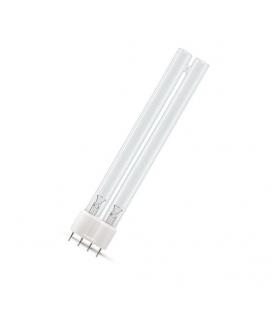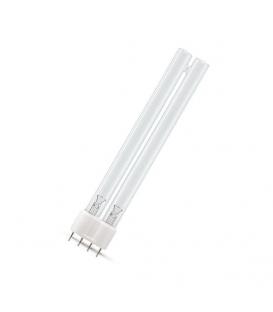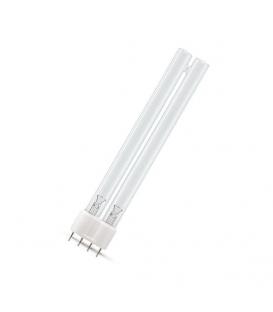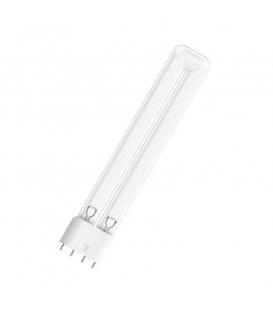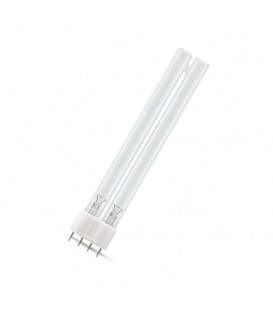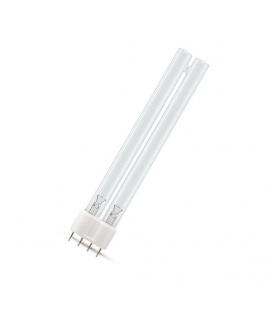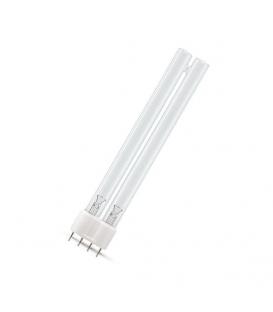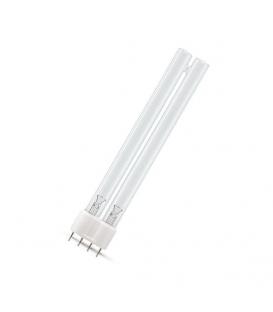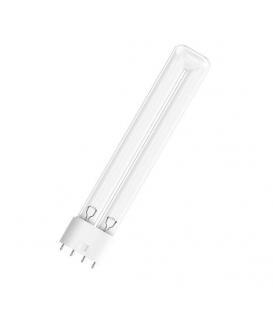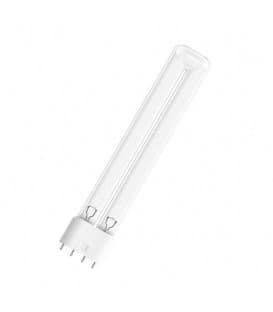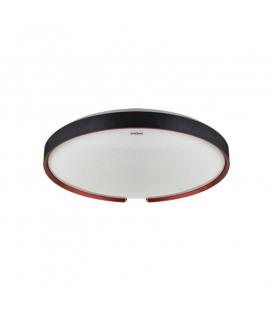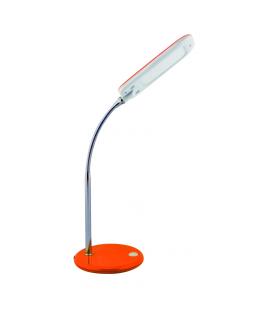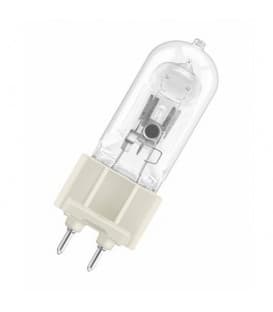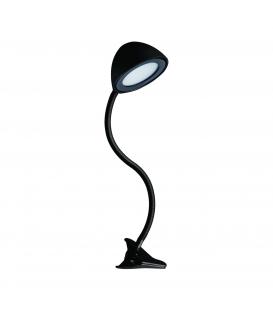PL 2G11 UV sterilization lamps effective disinfection safety

The 2G11 UV-C sterilization lamp is a type of ultraviolet (UV) lamp that utilizes UV-C radiation to disinfect and sterilize surfaces, air, and water. It gets its name from the 2G11 base type, which is a four-pin base configuration that is commonly used for these lamps. UV-C radiation, with a wavelength range of 100-280 nanometers, is particularly effective at destroying the DNA and RNA of microorganisms, rendering them unable to reproduce and causing their death.
The 2G11 UV-C sterilization lamps consist of a specialized quartz glass tube that encloses a low-pressure mercury vapor and an inert gas. When electricity is applied to the lamp, it generates UV-C radiation as a byproduct of the mercury vapor's interaction with the gas. The emitted UV-C radiation is then used for sterilization and disinfection purposes.
When microorganisms, such as bacteria, viruses, and mold spores, are exposed to the intense UV-C light emitted by these lamps, their genetic material is disrupted. This disruption prevents them from replicating and effectively neutralizes their ability to cause infections or contamination. UV-C sterilization is commonly used in healthcare facilities, laboratories, water treatment plants, and other settings where maintaining a sterile environment is critical.
Benefits:
- Effective Disinfection: UV-C radiation emitted by 2G11 lamps is highly effective at destroying a wide range of microorganisms, including bacteria, viruses, and fungi. This makes them a valuable tool for preventing the spread of infections and diseases.
- Chemical-Free: Unlike traditional disinfection methods that rely on chemicals, UV-C sterilization does not introduce any harmful chemicals into the environment. It offers a chemical-free approach to sterilization, making it safer for both humans and the environment.
- Broad Application: 2G11 UV-C lamps can be used for air, surface, and water disinfection. They are versatile and can be incorporated into various systems, such as air purifiers, HVAC systems, water treatment units, and surface disinfection devices.
- Rapid and Continuous Disinfection: UV-C sterilization is a relatively quick process that can disinfect surfaces and air in a matter of seconds to minutes. Additionally, UV-C lamps can be operated continuously, ensuring a continuous and reliable disinfection process.
- Reduced Maintenance: The 2G11 UV-C lamps have a long operational life, which reduces the need for frequent replacements. This results in lower maintenance costs and less downtime for equipment.
- Safety Measures: Many 2G11 UV-C sterilization lamps come equipped with safety features, such as automatic shutoff mechanisms when the lamp is exposed to open air, protecting individuals from potential UV-C exposure.
- Energy Efficiency: UV-C lamps are relatively energy-efficient, and advancements in lamp design have led to improved efficiency and reduced energy consumption.
- Complementary to Cleaning: UV-C sterilization is not a replacement for regular cleaning and hygiene practices but can serve as an additional layer of protection to ensure a clean and sterile environment.
Areas of Applications:
- Healthcare Facilities: UV-C sterilization lamps are widely used in hospitals, clinics, and healthcare settings to disinfect surfaces, equipment, and air, helping to control the spread of infections.
- Air Purification: These lamps are integrated into air purification systems, such as HVAC units and air purifiers, to eliminate airborne pathogens and improve indoor air quality.
- Water Treatment: UV-C sterilization is employed in water treatment plants to deactivate or eliminate harmful microorganisms, ensuring safe and clean drinking water.
- Food and Beverage Industry: UV-C lamps are utilized in food processing and packaging facilities to disinfect surfaces, equipment, and packaging materials, reducing the risk of contamination.
- Laboratories: Laboratories use UV-C sterilization lamps to sanitize equipment, tools, and workspaces, maintaining a sterile environment for experiments and research.
- Pharmaceutical Manufacturing: UV-C lamps play a crucial role in pharmaceutical production by sterilizing equipment and environments to ensure the purity of medications.
- Commercial and Residential Settings: UV-C sterilization lamps are integrated into commercial spaces and homes for disinfection purposes, especially in high-traffic areas.
- Water and Wastewater Treatment: UV-C is employed in wastewater treatment plants to eliminate pathogens and harmful organisms from wastewater before discharge.
- Agriculture: UV-C sterilization is used to disinfect soil, water, and greenhouse environments to prevent the spread of plant diseases.
In conclusion, 2G11 UV-C sterilization lamps offer an effective and chemical-free method of disinfection and sterilization across various applications. Their ability to neutralize harmful microorganisms makes them a valuable tool in maintaining hygiene and preventing the spread of infections in diverse settings.
Browse our "PL-L 2G11 UV-C sterilization" collection
2G11 UV-C Sterilization Lamps - Effective Disinfection & Safety
- 20,65 €Experience the power of PL-L 18W 4P TUV UV-C 2G11, a standout in our range of PL-L 2G11 UV-C sterilization lamps....
- 21,96 €Discover the power of PL-L 24W 4P TUV UV-C 2G11, a top-tier sterilization lamp. Experience superior hygiene with this...
- 31,01 €Experience the power of PL-L 35W 4P TUV UV-C 2G11, a standout in our range of sterilization lamps. This unique...
- 23,87 €Experience the power of PL-L 36W 2G11 UVC, a standout in our range of UV-C sterilization lamps. Offering superior...
- 39,21 €Shop the PL-L 36W 4P TUV UV-C 2G11 Sterilization Lamp for powerful disinfection. Compact design, constant UV output,...
- 47,92 €Experience the power of PL-L 55W 4P TUV UV-C, a standout in our range of 2G11 sterilization lamps. Ensuring optimal...
- 42,54 €Experience the power of PL-L 60W 4P TUV UV-C 2G11, a standout in our range of sterilization lamps. Offering superior...
- 49,42 €Discover the power of PL-L 95W 4P TUV UV-C 2G11, a standout in our range of sterilization lamps. Experience superior...
- 18,04 €Discover the power of PL-L HNS L 24W, a top-tier UV-C sterilization lamp from our 2G11 range. Experience superior...
- 21,19 €Discover the power of PL-L HNS L 36W 2G11 UV-C, a standout in our range of sterilization lamps. Experience superior...

